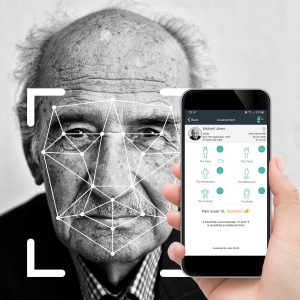This post was created in partnership with PainChek, the world’s first clinically validated digital pain assessment tool. Using AI, facial analysis and smartphone technology. Get in contact with us today, to learn more about integrating PainChek into your VCare system.
Pain is a universal human experience, and its management is essential to ensure the well-being and quality of life for individuals of all ages. However, when it comes to non-verbal patients, such as those with dementia, severe cognitive impairments, or communication difficulties, identifying and managing their pain can be a daunting challenge. In such cases, PainChek’s innovative pain assessment system emerges as a game-changer, providing a crucial tool for caregivers and healthcare professionals to accurately assess and address pain in non-verbal patients. In this blog post, we will explore why PainChek’s system is so valuable in enhancing the lives of non-verbal patients.
Revolutionising Pain Management: PainChek’s Gift to Non-verbal Patients
Non-verbal patients face unique hurdles when it comes to expressing their pain. Traditional pain assessment methods primarily rely on self-reporting, which becomes impractical when the patient cannot articulate their discomfort. This inability to communicate pain effectively can lead to underdiagnosis and undertreatment, causing unnecessary suffering and potentially compromising their overall health.
PainChek is an innovative mobile application that combines cutting-edge technology with artificial intelligence to assess pain levels in non-verbal patients accurately.

Here’s why it’s so indispensable:
- Objective Assessment: PainChek replaces subjective framework with objective data, making it simpler for caregivers and healthcare professionals to accurately determine the severity of pain in non-verbal patients. It employs facial analysis technology to analyse the patient’s micro-facial expressions and records facial muscle movements, which are known to be indicative of pain. Combining these results with a automated binary check-list across another 5 domians (vocalisation, behaviours etc), the system provides a reliable pain score, reducing the risk of misdiagnosis.
- Improved Quality of Life: Because they are unable to express their discomfort verbally, people with dementia frequently have undiagnosed pain that goes untreated. As a result, the existing method of measuring pain in this population is inadequate. Poor pain assessment can slow recovery and cause an increase in psychological symptoms like agitation and aggression. These symptoms not only have an impact on the dementia patient but also place a heavy burden on their family members and carers. By effectively managing pain, PainChek contributes to a significant improvement in the patient’s quality of life. Reduced pain leads to enhanced comfort, better mood, and overall well-being.
Pain management is a fundamental aspect of healthcare, but it becomes immensely challenging when dealing with non-verbal patients. PainChek’s pain assessment solution, with its groundbreaking technology, is a beacon of hope for both patients and caregivers in these situations. By providing objective and accurate pain assessments, it ensures that non-verbal patients receive the care and relief they deserve. As technology continues to advance, we can expect further innovations in healthcare that prioritise the well-being of all individuals, regardless of their ability to communicate verbally. PainChek’s contribution to pain management represents a significant step in this direction, ultimately enhancing the lives of non-verbal patients and improving the standard of care they receive.
